The Evolution of Chinese Characters
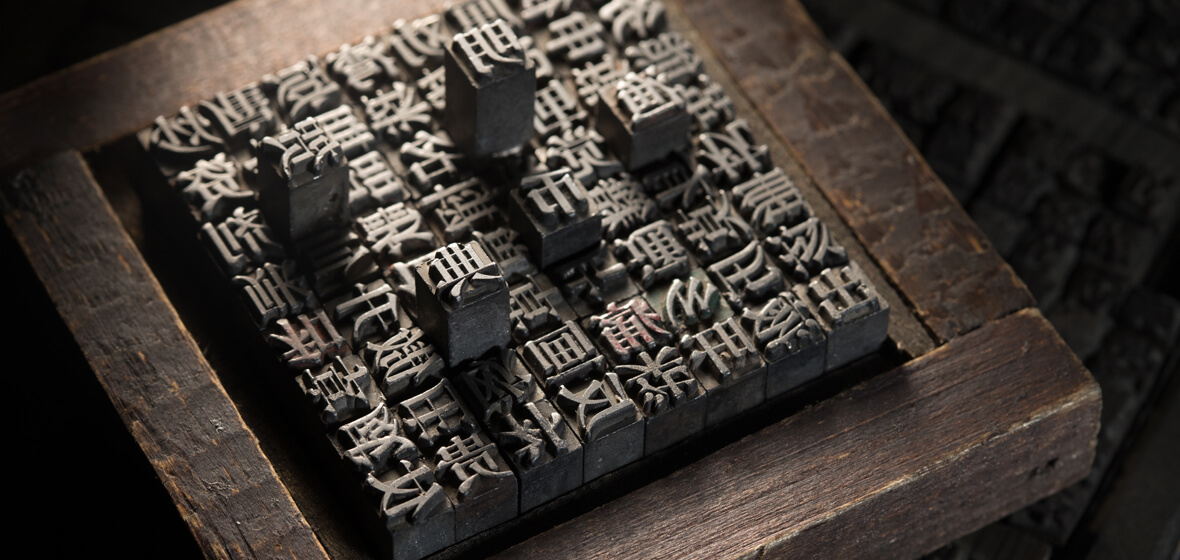
Chinese characters, also known as Hanzi (汉字) are one of the earliest forms of written language in the world, dating back approximately five thousand years. It consists of more than 96,000 logographic symbols, meaning that a symbol represents one syllable or concept rather than a sound as does the phonetic system. The Chinese characters are a powerful bond that keeps China as a united nation. No matter what dialect a Chinese person speaks, he or she can communicate with others by writing Chinese characters. Nearly one-fifth of the world’s population uses Chinese characters today. As an art form, Chinese calligraphy remains an integral aspect of Chinese culture. Chinese characters have evolved over the centuries from pictograms to what we have today.
The Origin of Chinese Characters
It is difficult to determine the specific time when the Chinese characters emerged. There have been various stories about the origin of the Chinese characters, with nearly all ancient writers attributing it to Cang Jie. According to ancient writings, Cang Jie had four eyes and four pupils which could observe different things in the world. When he raised his head he could understand the form of the stars in the sky; when he lowered his head he could distinguish the tracks of birds and animals on the ground. Therefore, he invented a lot of symbols to represent different objects and affairs, which were the oldest Chinese characters. It is said that after characters were invented grain rained from heaven and the spirits howled every night to lament the leakage of the divine secret of writing.
It is hard to accept that the characters were created solely by an individual. The characters have been, most probably, invented by several people, each of whom might have engraved some figures or drawn some pictures.
Liushu (六书) or “The Six Principles” Theory of the Structure of Chinese Characters.
The Chinese characters may seem chaotic to the novice, but their structure is not at all haphazard. Chinese scholars have divided Chinese characters into six categories known as liushu (六书), literally translated as the Six Books. The six types of Chinese characters are:
1. Zhishi (指事)
Characters depicting abstract concepts: When seen they can be recognized; when inspected, their meaning becomes apparent, eg: 上(up) and下(down).
2. Pictographs or xiang xing (象形)
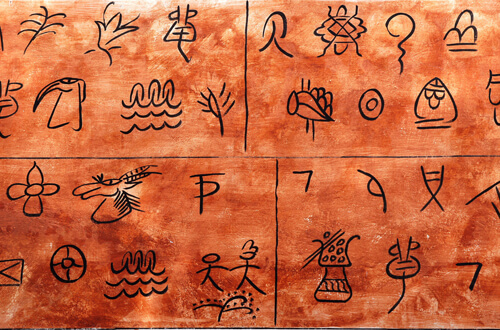
The characters were originally pictures, like persons, places, and things, eg:
3. Xingsheng (形声)
Characters formed from a phonetic and a radical: When the need arose for a character whose meaning was difficult to illustrate with simple pictures, the character was often created by borrowing an existing character with the same pronunciation, eg: 问 ( ask), 鸭 (duck) and 河 (river). Seventy-five percent of all Chinese characters are of this type.
4. Huiyi (会意)
Characters that use more than one radical to represent more complex ideas or abstractions, eg, 武(war/combat) is composed of two parts: 止(foot) and戈 (dagger-axe), which means a soldier standing with a weapon.
5. Zhuanzhu (转注)
means mutual Explanatory: Characters share the same semantic radicals and are mutually explainable, eg, both 考 and 老 mean old.
6. Jiajie (假借)
When a new character was needed, sometimes an old, even obsolete character was invested with the new meaning. The character 蚤, for example, now means flea, in ancient times because of the pronunciation it was borrowed as the character for the word 早 which means early.
The Evolution of Chinese Characters
Oracle Bone Inscriptions (Jia Guwen 甲骨文), Shang Dynasty (1600-1046 BCE)
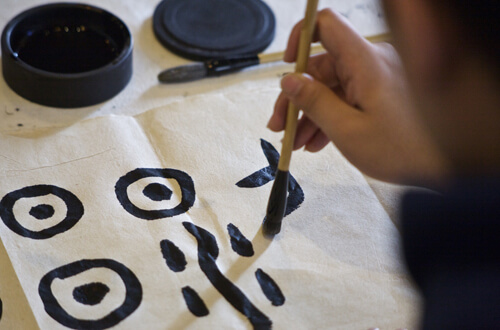
The earliest forms of documented writing in China are found in Anyang, the capital of the Shang Dynasty (1600-1046 BCE) in 1895. They consist of short texts inscribed on ox scapulae and turtle plastrons and are known as oracle bones (甲骨 - jiagu), and the script is known as the oracle script (甲骨文 - jiǎgǔwén) or "shell bone script". As the Oracle Bone inscriptions mainly recorded the art of divination, this script is also called bu ci (卜辞), divination writings. Over one thousand of the over four thousand characters inscribed on excavated oracle bones have been deciphered. Structural the Oracle Bone characters resemble modern Chinese characters in that some of them are combinations of two or more characters, and there is a high degree of abstraction in the characters. This suggests that the script was invented long before the Shang Dynasty.
Bronze Inscriptions (Jin Wen 金文), Shang Dynasty (1600 – 1046 BCE), and Zhou Dynasty (1046 – 256 BCE)
Chinese bronze inscriptions, also commonly referred to as Bronze script or Bronze ware script are written in a variety of Chinese scripts on Chinese ritual bronzes such as Zhong (bells) and Ding (tripodal cauldrons) from the Shang dynasty to the Zhou dynasty and even later. Over two thousand of the nearly four thousand collected single characters from these bronze objects are now understood.
Small Seal Characters (Xiao Zhuan 小篆) Qin Dynasty (221-207 B.C.E)
In the Warring States Period (453-221 B.C.E), different scripts were in use in the seven main kingdoms. Following the conquest and unification of the country, the first emperor of the Qin Dynasty, Qin Shi Huang simplified and unified the written language. This unification of the written language during the Qin Dynasty significantly influenced the eventual standardization of the Chinese characters. The small seal is used for official documents; an official script is used in daily communication. The small seal script, carved on the stone is used for Chinese stamp scrolls and documents today. It retains many features of the script on the ancient oracle bones.
Official Script or Clerical Script (Li Shu 隶书) Han Dynasty (206 BCE – 220CE)
Official Script is the formal written language of the Han Dynasty (206 BCE – 220CE). Over time, curved and broken strokes gradually increased, becoming distinct characteristics of this style. Official Script symbolizes a turning point in the evolution of the history of Chinese characters, after which Chinese characters transitioned into a modern stage of development.
Regular Script (Kai Shu 楷书) Southern and Northern Dynasties (420-589CE)
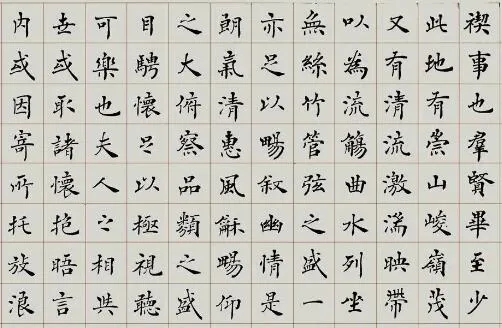
Regular Script is also known as “uniform script” and “real script”, referring to a typeface of order.
Regular Script is a regular typeface directly evolved from Official Script.
Regular Script first appeared at the end of the Eastern Han Dynasty (25-220CE). But it was not until the Southern and Northern Dynasties (420-589CE) that Regular Script rose to dominant status. During that period, the Regular Script continued evolving stylistically, reaching full maturity in the early Tang Dynasty (618-907CE). Regular Script master calligraphers include Ouyang Xun (557-641CE), Yan Zhenqing (709-784), and Liu Gongquan (778-865CE). This script has remained in use until now and is the fundamental skill people must learn well in their study of calligraphy.
Cursive Writing (Cao Shu 草书) first appeared in Han Dynasty (206 BCE – 220CE)
Cursive Writing first appeared at the beginning of the Han Dynasty (206 BCE – 220CE). The earliest cursive writings were variants of the rapid, freestyle form of the Official Script. Cursive Writing is not in general use, being a purely artistic, calligraphic style. This form can be cursive to the point where individual strokes are no longer differentiable, and characters are illegible to the untrained eye. Cursive writing remains highly revered for the beauty and freedom it embodies.
Freehand Cursive Writing (or Semi-cursive writing/ Running script) (Xing Shu 行书)
Freehand Cursive appeared and became popular during the Three Kingdoms Period (220-280CE) and the Jin Dynasty (265-420CE). The character of Freehand Cursive writing is not shortened or connected, but strokes within the characters often run together. Because this style is not as abbreviated as Cursive Writing, most people who can read Regular Script can read semi-cursive. Some of the best examples of semi-cursive are found in the work of Wang Xizhi (321-379CE), the most famous calligrapher in Chinese history, from the Eastern Jin Dynasty (316-420 CE). The Lanting Xu (兰亭序 Preface of the Orchid Pavilion) composed by Wang Xizhi is revered as the best freehand cursive calligraphy.
Simplified Chinese characters (Jianxi Zi, 简体字)
As we can see from the evolutionary process of Chinese characters over the past thousands of years, the general trend of evolution is moving towards simplicity. The Chinese characters abandoned complicated forms and adopted simpler and easier forms from time to time. Since the early 20th century, the evolution intensified, there have been calls to simplify or even abolish the Chinese script as many believed that the Chinese script was an obstacle to progress. Some radical scholars even suggested Latinized the Chinese language. In 1935, Chinese linguists like Qian Xuantong (钱玄同) developed schemes for the simplification of the writing system to promote popular literacy. Simplified characters are the fruit of these efforts.
In 1952, the Government of the People’s Republic of China began promoting simplified characters in printing. The second round of simplifications was published in 1977 but proved very unpopular and was abandoned in 1986. Simplified characters are now the official forum of the People’s Republic of China and in Singapore; however, traditional characters are often used for shop signs, some newspapers, and calligraphy. Traditional Chinese characters are still used in Hong Kong, Macau, and Taiwan. Since 1954, over 2,200 Chinese characters have been simplified.
What is Pinyin?
Pinyin is the Romanization of Chinese. In 1605, the Jesuit missionary Matteo Ricci published the first known Chinese-to-Western text, titled Xizi Qiji (西字奇迹 Wonder of Western Writing). This system used the Roman alphabet to transcribe the Chinese language. The most widely used system is Wade-Giles Romanization. It was developed by Sir Thomas Wade, a British ambassador, and scholar, in 1859 and later refined by Herbert Giles, another British ambassador and scholar in the 1890s. Some examples of Wade-Giles vs. pinyin are: Yangtse » Yangzi River Peking » Beijing, Canton » Guangzhou, Hwang Ho » Yellow River.
In the 1950s, a group of Chinese linguists began work on a new romanization system to increase literacy and even replace Chinese characters. The Pinyin system invented by linguist and sinologist Zhou Youguang was the most popular one. It was adopted and published by the Chinese government in 1958.
The International Organization for Standardization (ISO) adopted pinyin as an international standard in 1982, followed by the United Nations in 1986.
Uncle Hanzi 汉字叔叔
Richard Sears from the U.S. is known in China as the founder of a website about Chinese etymology. Amazed by his two decades of effort researching Chinese characters, Chinese netizens gave him the nickname Hanzi Shushu, or Uncle Hanzi. A former programmer, Sears has already broken down 96,000 ancient characters and 8,000 commonly used Chinese characters through a computing algorithm and scanned them into his self-run chineseetymology.org. You can visit his website if you want to learn more about the evolution of Chinese characters.

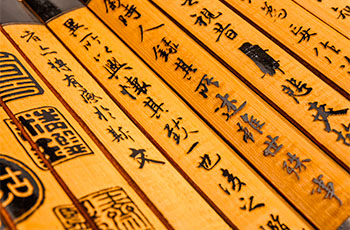 The Semi-Cursive Script
The Semi-Cursive Script 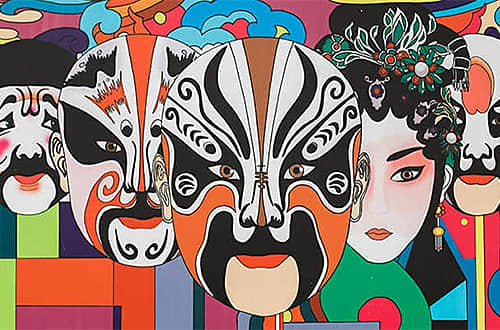 Beijing Opera
Beijing Opera 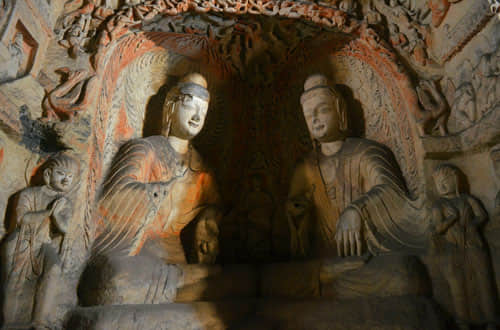 Buddhist Grottoes in China
Buddhist Grottoes in China  Chinese Kung Fu
Chinese Kung Fu